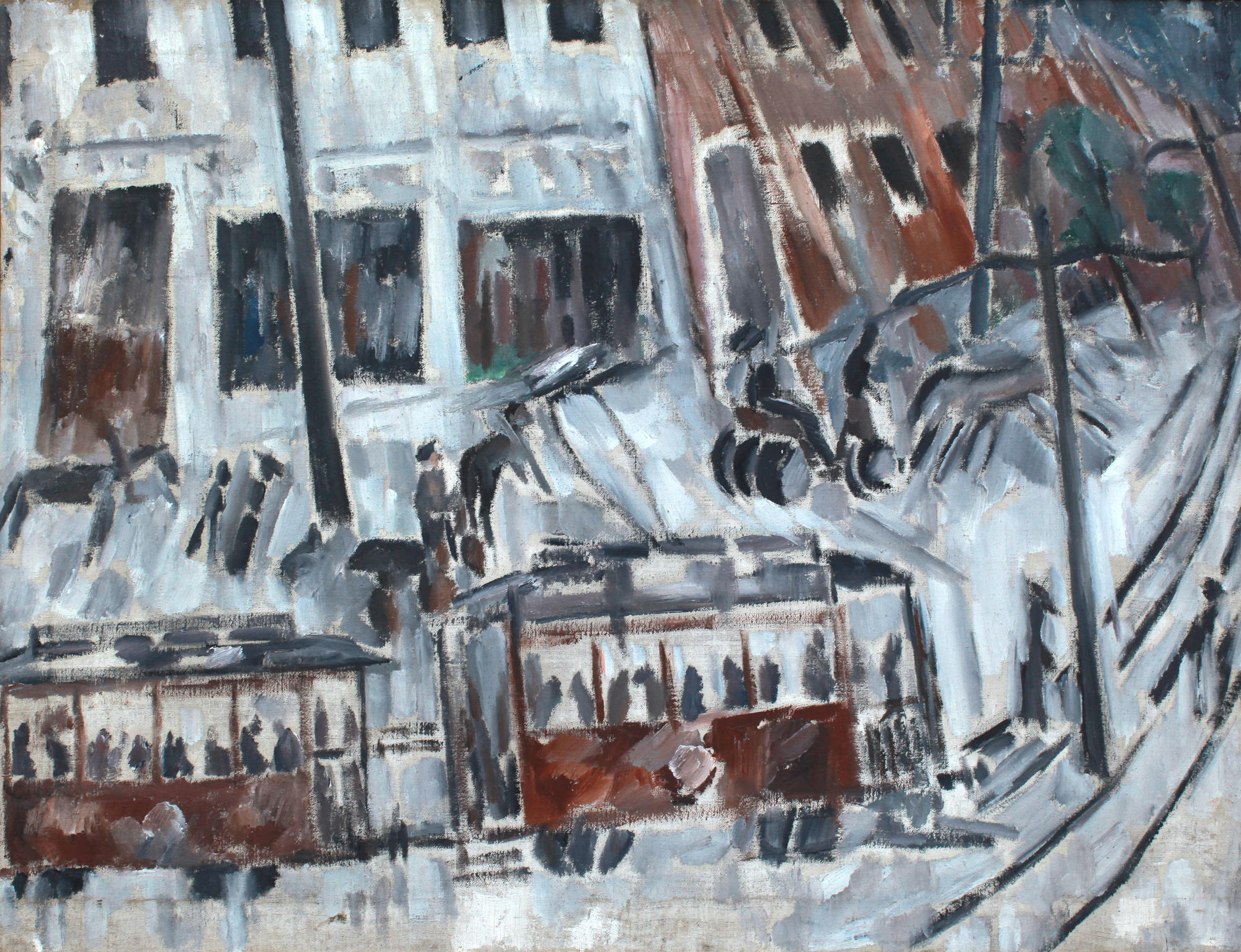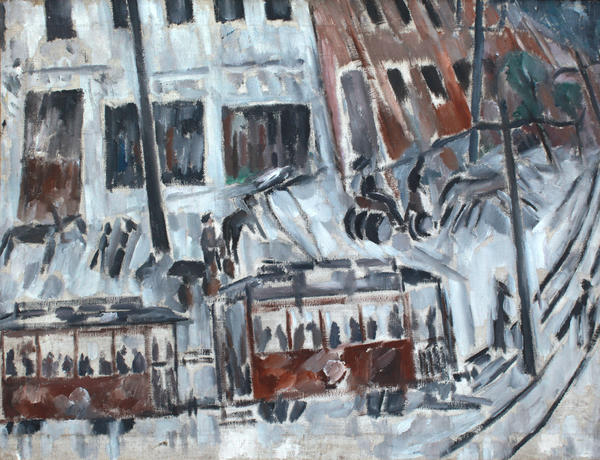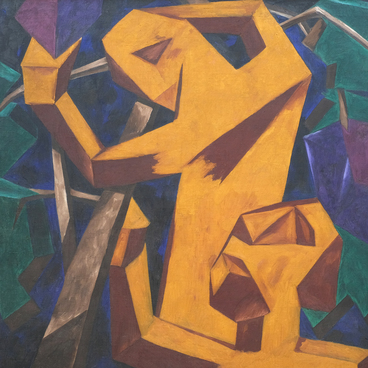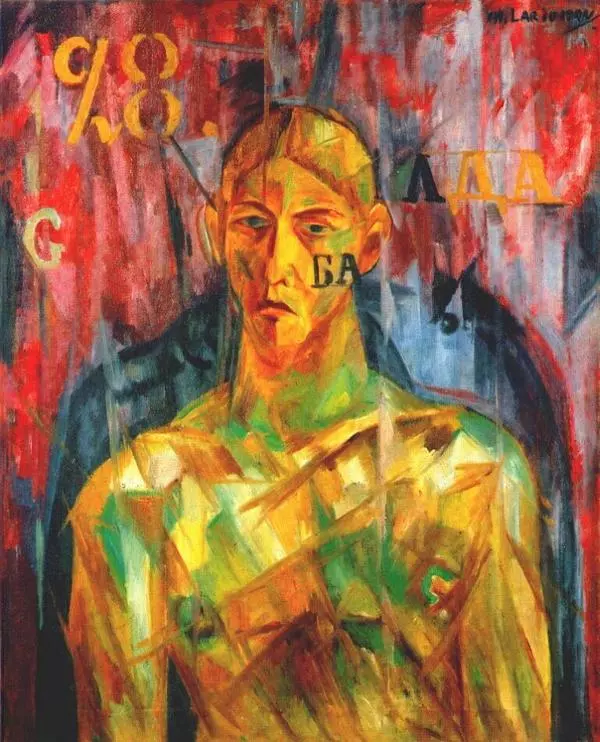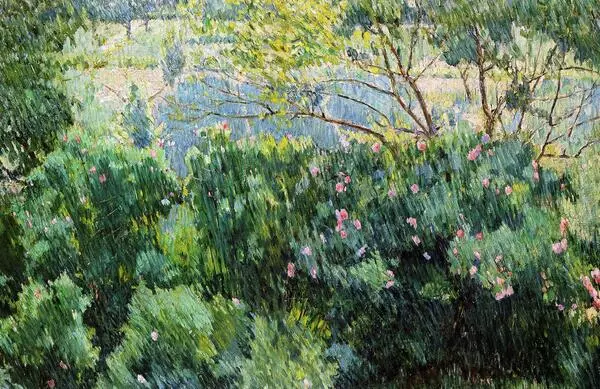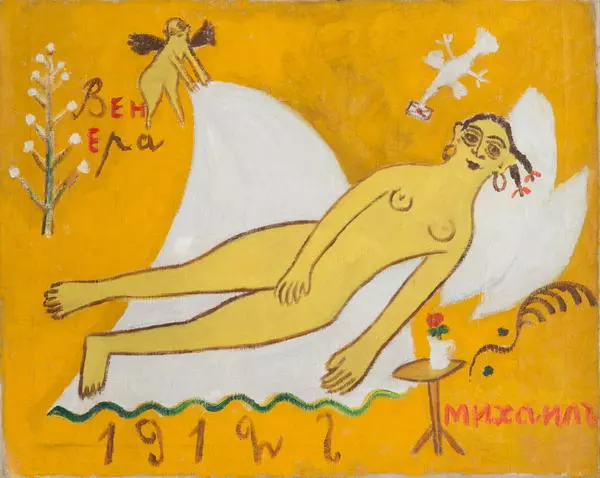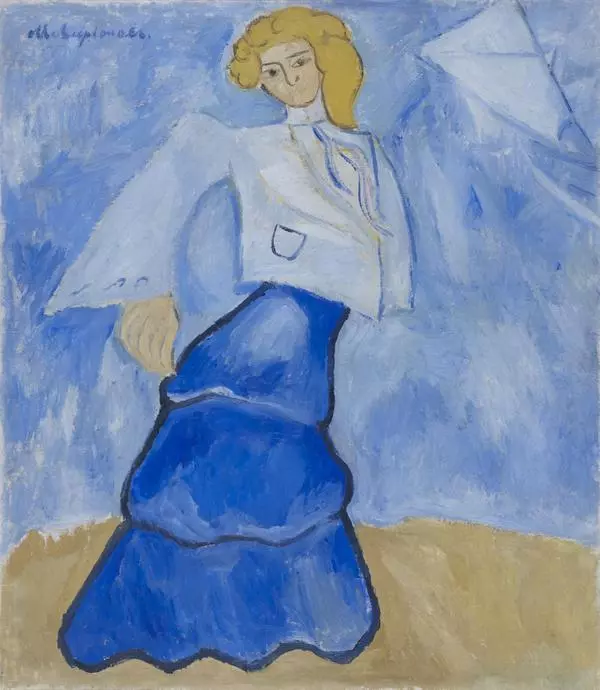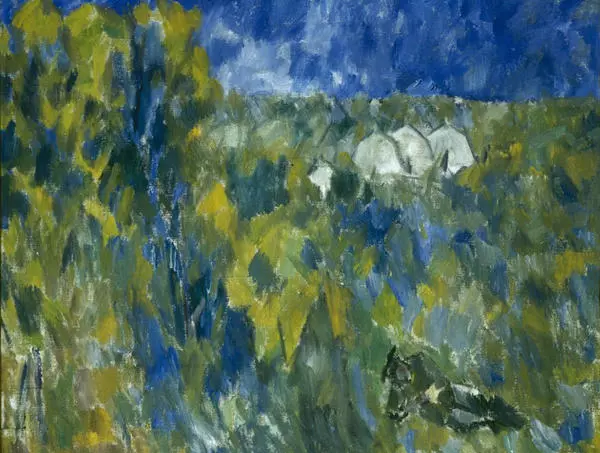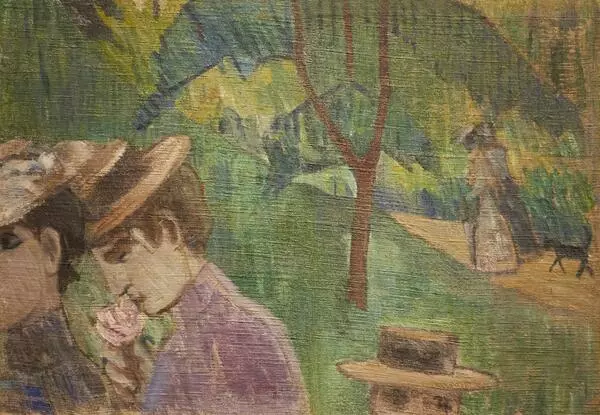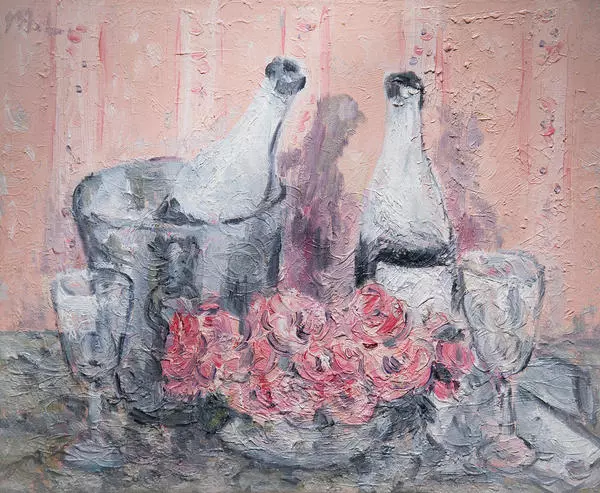Mikhail Fyodorovich Larionov was a founding member of the Jack of Diamonds artistic group together with Pyotr Konchalovsky and Ilya Mashkov. However, Mikhail Larionov’s painting style and color palette were different and often dubbed as “experimental and rebellious”.
Mikhail Larionov was fascinated by the naïve art style with its elements of primitive folk motifs, cheap popular prints, city outdoor signs, and folk toys. His interest in primitivism made him withdraw from the Jack of Diamonds to stage independent exhibitions the names of which shocked the general public. In the subjects he chose, Larionov also differed from the concept upheld by the Jack of Diamonds group focused on figural painting and landscapes. Larionov preferred genre scenes.
After years of creative search, Mikhail Larionov founded Russian primitivism. His artworks conveyed the ambiance of provincial lanes, second-rate barber shops, and dilapidated army barracks; his color scheme was dominated by soft, dull shades. The color scheme was consistent with the folk themes which made up the core of his artistic program.
The canvas A Tram. City Street exhibited in the museum clearly illustrates the point. It was painted in 1911, when Mikhail Larionov finally quit the Jack of Diamonds and decided to go his own way. This futuristic composition essentially represents an urban landscape. The artist got easily carried away in his experiments: he embraced the concept of futurism and even became an active member of the European futuristic movement.
Futurism predicted the overriding power of industrial rhythms in the near future, the upcoming era of scientific and technical revolution. However, the style demanded that contemporary artworks conveyed such rhythms right away, which explains the origin of a key artistic vehicle of the futuristic style - the montage, i.e. an object would be depicted as a bunch of various other objects and unconnected parts. In the process, the work of art acquired a propensity for curious transformation, spontaneous development, and change.
The futuristic montage commonly involved a shift of forms typical of cubism – and those radical artistic trends were ideally suited for conveying the theme of urban rhythms with their dynamics and dissonances. The Tram. City Street landscape is an expression of the feelings of a person who accidentally found himself in the hustle of a city center and stopped in his tracks watching the passersby, the streetcar, and horse vehicles.
The Ray Lines painting was also completed in 1911, and as its title suggests to the viewer, is immediately related to the theory of Rayonism. Among other things, the canvas is of interest because it shows the artist as a forerunner of abstract art.
Mikhail Larionov was fascinated by the naïve art style with its elements of primitive folk motifs, cheap popular prints, city outdoor signs, and folk toys. His interest in primitivism made him withdraw from the Jack of Diamonds to stage independent exhibitions the names of which shocked the general public. In the subjects he chose, Larionov also differed from the concept upheld by the Jack of Diamonds group focused on figural painting and landscapes. Larionov preferred genre scenes.
After years of creative search, Mikhail Larionov founded Russian primitivism. His artworks conveyed the ambiance of provincial lanes, second-rate barber shops, and dilapidated army barracks; his color scheme was dominated by soft, dull shades. The color scheme was consistent with the folk themes which made up the core of his artistic program.
The canvas A Tram. City Street exhibited in the museum clearly illustrates the point. It was painted in 1911, when Mikhail Larionov finally quit the Jack of Diamonds and decided to go his own way. This futuristic composition essentially represents an urban landscape. The artist got easily carried away in his experiments: he embraced the concept of futurism and even became an active member of the European futuristic movement.
Futurism predicted the overriding power of industrial rhythms in the near future, the upcoming era of scientific and technical revolution. However, the style demanded that contemporary artworks conveyed such rhythms right away, which explains the origin of a key artistic vehicle of the futuristic style - the montage, i.e. an object would be depicted as a bunch of various other objects and unconnected parts. In the process, the work of art acquired a propensity for curious transformation, spontaneous development, and change.
The futuristic montage commonly involved a shift of forms typical of cubism – and those radical artistic trends were ideally suited for conveying the theme of urban rhythms with their dynamics and dissonances. The Tram. City Street landscape is an expression of the feelings of a person who accidentally found himself in the hustle of a city center and stopped in his tracks watching the passersby, the streetcar, and horse vehicles.
The Ray Lines painting was also completed in 1911, and as its title suggests to the viewer, is immediately related to the theory of Rayonism. Among other things, the canvas is of interest because it shows the artist as a forerunner of abstract art.
